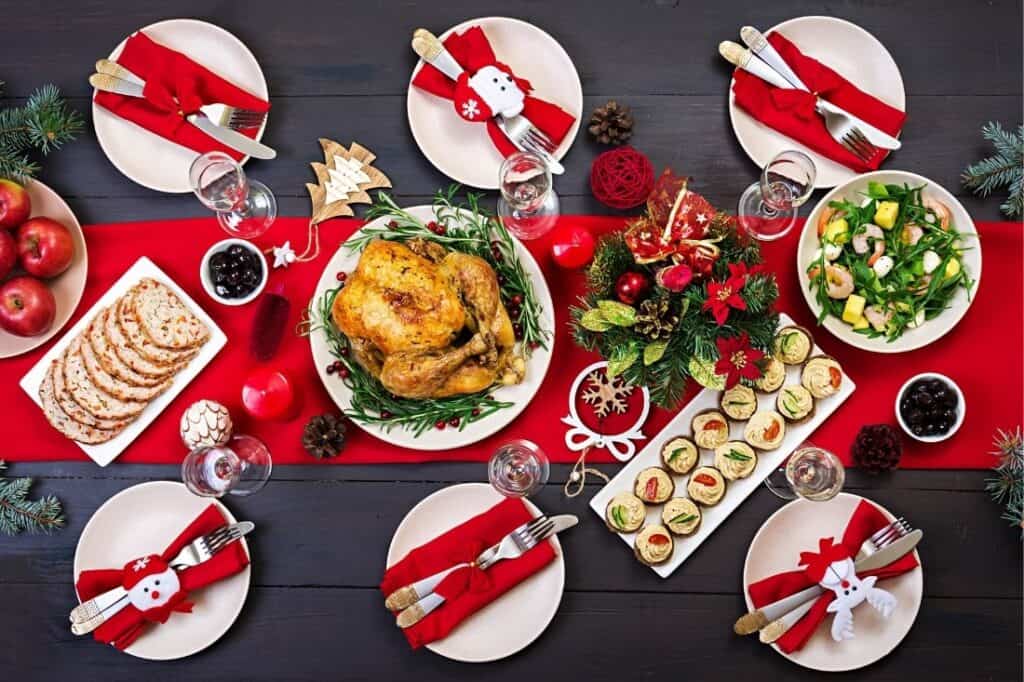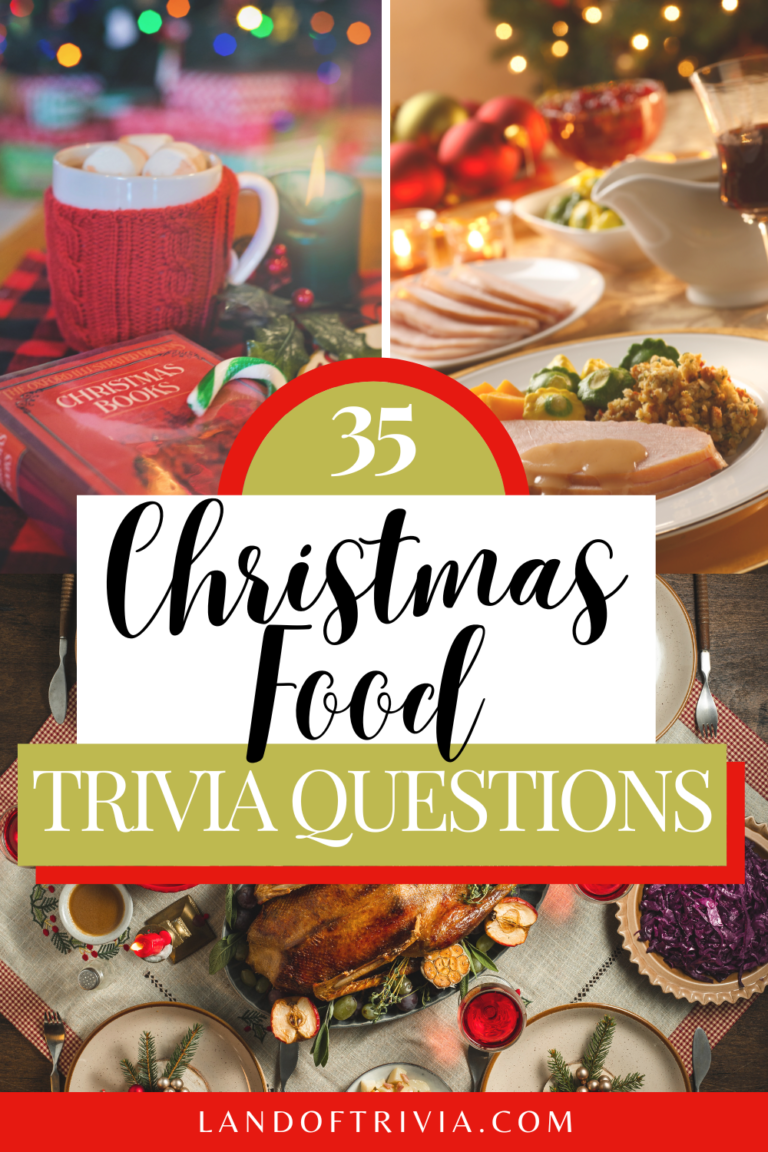Christmas Food Trivia 2024: A Festive Feast of Fun Facts
Related Articles: Christmas Food Trivia 2024: A Festive Feast of Fun Facts
- Christmas Food Traditions Around The World 2024
- Christmas Food Sign-Up Sheet 2024
- Christmas Food In Singapore 2024: A Culinary Extravaganza
- Christmas Food Recipes UK 2024
- Christmas Food Shopping List Template 2024: A Comprehensive Guide
Introduction
With enthusiasm, let’s navigate through the intriguing topic related to Christmas Food Trivia 2024: A Festive Feast of Fun Facts. Let’s weave interesting information and offer fresh perspectives to the readers.
Table of Content
Video about Christmas Food Trivia 2024: A Festive Feast of Fun Facts
Christmas Food Trivia 2024: A Festive Feast of Fun Facts

Christmas, a time of joy, family, and delectable culinary delights, holds a treasure trove of fascinating food trivia that can enrich your holiday festivities. From the origins of beloved treats to the symbolism behind festive feasts, embark on a culinary adventure as we explore the intriguing world of Christmas food trivia.
1. The Origin of the Christmas Pudding
The iconic Christmas pudding, a rich and fruity dessert, traces its roots back to the 14th century. Initially known as "plum porridge," it was a simple mixture of meat, dried fruit, and spices. Over time, it evolved into a sweeter dish, with the addition of sugar, eggs, and breadcrumbs.
2. The Symbolism of the Yule Log
The Yule log, a large log burned on the hearth during Christmas, symbolizes the return of light and warmth during the darkest days of winter. Its origins can be traced to ancient pagan traditions, where it represented the sun god and the hope for a fruitful harvest.
3. The Candy Cane’s Humble Beginnings
The candy cane, a beloved Christmas treat, originated in Germany in the 17th century. Initially shaped like a shepherd’s crook, it was intended to represent the staff of the shepherds who visited the newborn Jesus. Its red and white stripes symbolize the blood of Christ and the purity of his sacrifice.
4. The History of Eggnog
Eggnog, a creamy and festive beverage, has a rich and varied history. Its origins can be traced to medieval England, where it was known as "posset." Over time, it evolved into a more elaborate drink, with the addition of eggs, cream, and spices.
5. The Symbolism of the Gingerbread House
Gingerbread houses, a whimsical and festive tradition, represent the coziness and warmth of the Christmas season. Their origins can be traced back to the 16th century, when they were used as decorations in German homes.
6. The First Gingerbread Man
The first gingerbread man, a popular Christmas cookie, was created in the 16th century by Queen Elizabeth I of England. She ordered the creation of gingerbread men to resemble her guests, and the tradition has continued ever since.
7. The Christmas Ham’s Origins
The Christmas ham, a staple of many holiday tables, has its roots in ancient Rome. During the festival of Saturnalia, Romans would sacrifice pigs to honor the god Saturn. Over time, the tradition of eating pork during Christmas evolved from these pagan roots.
8. The Symbolism of the Christmas Turkey
The Christmas turkey, a centerpiece of many festive feasts, symbolizes prosperity and abundance. Its origins can be traced back to the 16th century, when Henry VIII declared turkey to be the official Christmas meal.
9. The History of the Christmas Pie
The Christmas pie, a traditional English dish, dates back to the Middle Ages. It was originally a meat pie, but over time, it evolved into a sweet pie filled with mincemeat, a mixture of dried fruit, spices, and brandy.
10. The Significance of the Christmas Cake
The Christmas cake, a rich and ornate dessert, symbolizes the abundance and joy of the Christmas season. Its origins can be traced back to the Victorian era, when it was known as the "bride’s cake."
11. The Popularity of Christmas Cookies
Christmas cookies, a beloved holiday tradition, have been enjoyed for centuries. Their origins can be traced back to medieval Europe, where they were used as decorations and gifts.
12. The Story Behind the Sugar Plum Fairy
The Sugar Plum Fairy, a beloved character from "The Nutcracker" ballet, symbolizes the magic and wonder of the Christmas season. Her name derives from the sugar plums, a type of candy that was popular during the Victorian era.
13. The Origins of the Christmas Stocking
The Christmas stocking, a cherished tradition, has its roots in the legend of Saint Nicholas. It is said that he would secretly leave gold coins in the stockings of poor children, inspiring the custom of hanging stockings by the fireplace.
14. The History of the Christmas Orange
The Christmas orange, a symbol of good fortune and prosperity, has been a festive tradition for centuries. Its origins can be traced back to the 12th century, when it was brought to Europe from the Middle East.
15. The Symbolism of the Christmas Apple
The Christmas apple, a symbol of peace and goodwill, has been a part of holiday traditions for centuries. It is often used to decorate Christmas trees and is associated with the story of Adam and Eve.
16. The Significance of the Christmas Bell
The Christmas bell, a symbol of joy and celebration, has been a part of holiday traditions for centuries. Its origins can be traced back to the Middle Ages, when it was used to announce the arrival of Christmas.
As we gather around our festive tables this Christmas, let us savor not only the delicious treats but also the rich tapestry of history and symbolism that surrounds them. From the origins of the Christmas pudding to the significance of the Christmas bell, each culinary delight holds a story that enriches the joy and magic of the season.








Closure
Thus, we hope this article has provided valuable insights into Christmas Food Trivia 2024: A Festive Feast of Fun Facts. We thank you for taking the time to read this article. See you in our next article!
